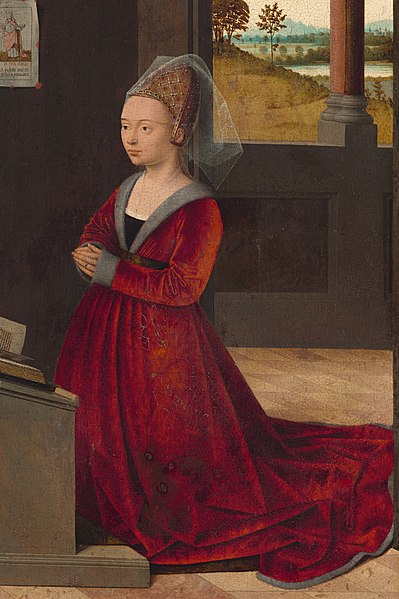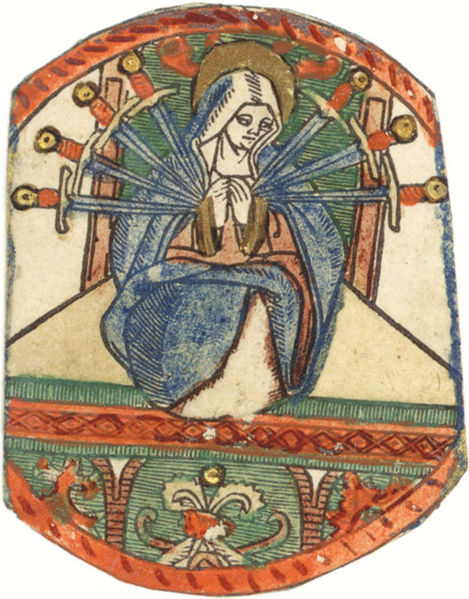Andrea Mantegna was an Italian painter, a student of Roman archeology, and son-in-law of Jacopo Bellini.
St. Sebastian, 1480; panel; Musée du Louvre
The Agony in the Garden (left panel of the predella of the San Zeno Altarpiece, 1455) National Gallery, London, is the pinnacle of Mantegna's early style.
Christ as the Suffering Redeemer. Christ resurrecting, depicted according to Luke 24:1–2, praising the Lord with a hymn (c. 1488–1500)
Judith and Holofernes, by Andrea Mantegna or possibly Giulio Campagnola, c. 1495
An old master print is a work of art produced by a printing process within the Western tradition. The term remains current in the art trade, and there is no easy alternative in English to distinguish the works of "fine art" produced in printmaking from the vast range of decorative, utilitarian and popular prints that grew rapidly alongside the artistic print from the 15th century onwards. Fifteenth-century prints are sufficiently rare that they are classed as old master prints even if they are of crude or merely workmanlike artistic quality. A date of about 1830 is usually taken as marking the end of the period whose prints are covered by this term.
The Three Crosses, drypoint by Rembrandt, 1653, state III of IV
Melencolia I, 1514, engraving by Albrecht Dürer
This donor portrait of about 1455 shows a large coloured print attached to the wall with sealing wax. Petrus Christus, NGA, Washington.
Anonymous German 15th-century woodcut, about 1480, with hand-colouring, including (unusually) spots of gold. 5.2 x 3.9 cm (similar to the original size on most screens)








